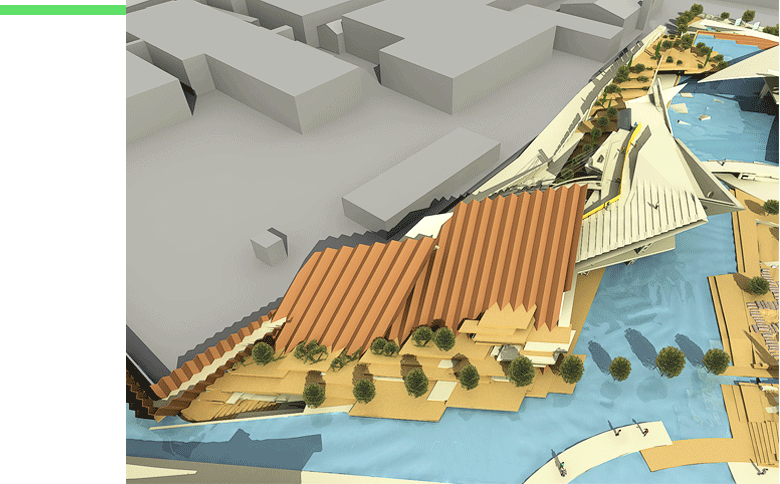






















Keeping with the general morphic, historic and mythic, paradigm, the design of this complex focuses specifically on the morphic parameter of creativity and play. Design here aims to play an explicit educational role, highlight and transmit the dialectic of forms and creative imagination over content and meaning. This complex consists of three major homeomorphic spaces in a synthesis which is based on their common morphic features. These are the �hut�, the �ship�, and the �flying paper-airplane� (alluding to three simple, paper-folding, constructivist gestures) which in turn elaborate the relationship between �inside� and �outside� in three characteristic ways referring respectively to the earth, the water, and the air, and their concomitant structures. These spaces are designed to host educational and artistic activities for kids, involving workshops, exhibitions, play and so on. The complex also includes library, eating and resting areas, small aquarium, and storage, while its roof is multiply accessible and used for play and educational programmes. It also includes an archaeological finding from the Byzantine period, which was discovered in the area during construction, and eventually preserved on site. The connection of the complex with its adjacent ones occurs through designed journeys (long walks and water-journeys by boat) which are meant to emphasize the process of expedition and exploration.
The Exhibition and Research Centre, the Art & Education Centre for Children and the Museum of the Hellenic World are the three major complexes which form the Cultural Park of the Hellenic Cosmos (CPHC).

![]()